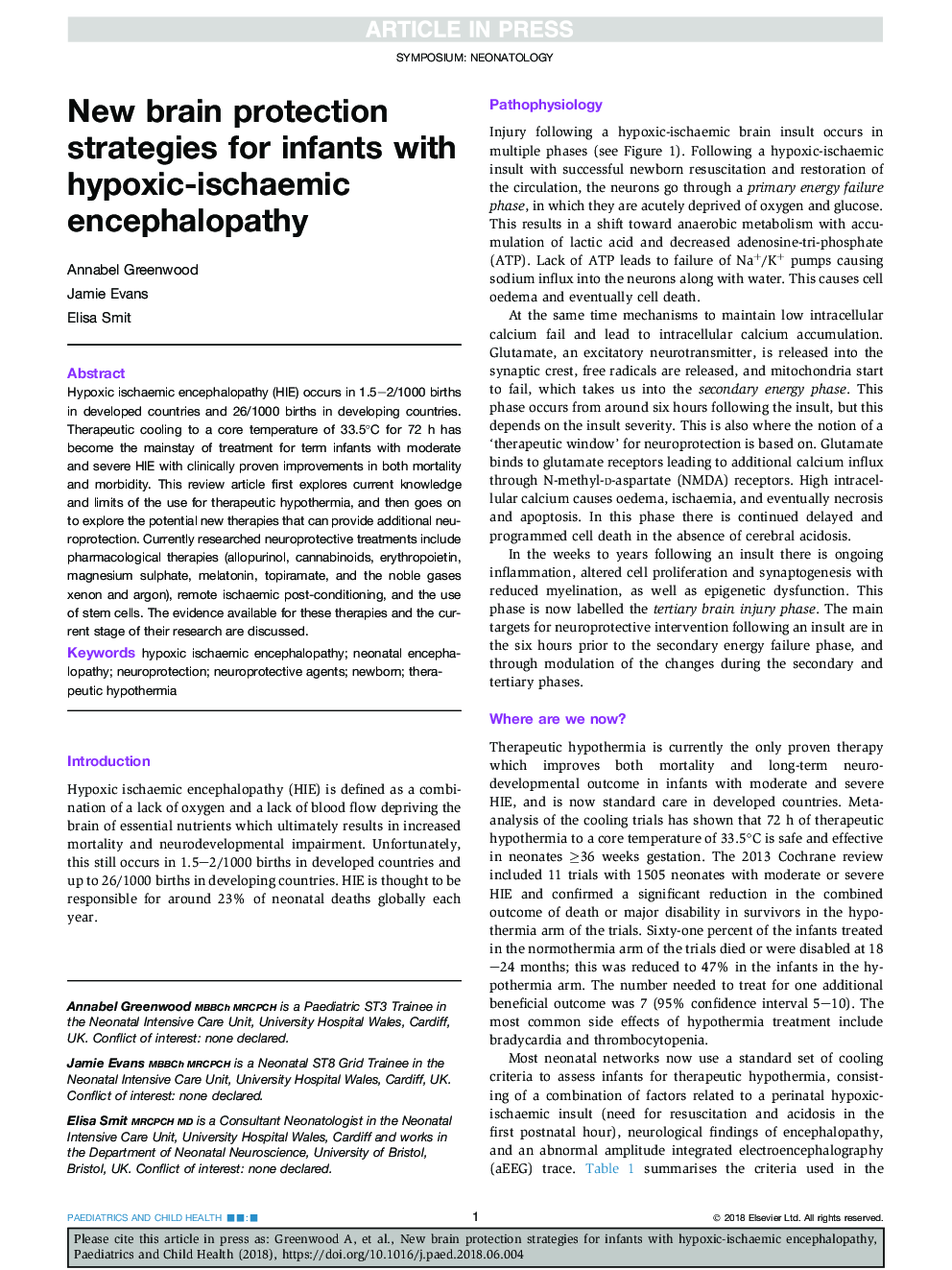| Article ID | Journal | Published Year | Pages | File Type |
|---|---|---|---|---|
| 8964765 | Paediatrics and Child Health | 2018 | 7 Pages |
Abstract
Hypoxic ischaemic encephalopathy (HIE) occurs in 1.5-2/1000 births in developed countries and 26/1000 births in developing countries. Therapeutic cooling to a core temperature of 33.5°C for 72 h has become the mainstay of treatment for term infants with moderate and severe HIE with clinically proven improvements in both mortality and morbidity. This review article first explores current knowledge and limits of the use for therapeutic hypothermia, and then goes on to explore the potential new therapies that can provide additional neuroprotection. Currently researched neuroprotective treatments include pharmacological therapies (allopurinol, cannabinoids, erythropoietin, magnesium sulphate, melatonin, topiramate, and the noble gases xenon and argon), remote ischaemic post-conditioning, and the use of stem cells. The evidence available for these therapies and the current stage of their research are discussed.
Keywords
Related Topics
Health Sciences
Medicine and Dentistry
Perinatology, Pediatrics and Child Health
Authors
Annabel Greenwood, Jamie Evans, Elisa Smit,
